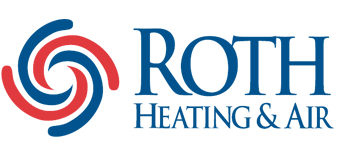Roth Heating & Air’s Guide to Warm Floors Without Radiant Heating

Introduction to Cozy Floors
Stepping onto a warm floor during winter brings an unparalleled sense of comfort. For those without radiant floor heating, it can seem difficult to achieve that cozy sensation. However, with some effective HVAC solutions, you can still experience warmth underfoot. Roth Heating & Air offers a variety of strategies to help homeowners make the most of their existing systems. By focusing on enhancing airflow, utilizing heat vents efficiently, and improving room insulation, you can create a warmer environment in your home. Embrace these techniques to transform your living space into a cozy retreat during the colder months.
Improving Airflow
Proper airflow ensures that the warmth generated by your heating system spreads evenly throughout your home. Start by changing your filters, arranging your furniture to allow air to move freely; avoid placing large pieces directly in front of vents. Raising furniture slightly can also help air pass underneath. Ceiling fans can be a great asset when set to reverse mode, pulling warm air down from the ceiling. Additionally, ensure that doors and windows are sealed well to prevent drafts, which can disrupt the airflow and make rooms feel colder.
Optimal Use of Heat Vents
Adjusting your heat vents to direct warm air effectively can make a noticeable difference in floor warmth. Avoid special designer supply registers that restrict airflow. Aim the registers towards the floor to ensure the heat reaches where it’s needed most. It’s essential to keep these vents unobstructed; move furniture, rugs, or curtains that may be blocking them to ensure free airflow. Regular cleaning of ductwork and grills is also important to remove dust and debris that can impede the warm air flow. If there is improper register location you can use register extenders can help channel the warm air to specific areas, enhancing overall comfort. By taking these steps, you can improve the efficiency of your heating system and enjoy a cozier home environment.
Insulation Methods for Rooms
Proper insulation is crucial for maintaining warmth in your home. It helps reduce heat loss through floors and walls, making it easier to keep your home at a comfortable temperature.Focus on areas that are most vulnerable to drafts, such as basements and older homes with insufficient insulation. Adding extra insulation in these areas can make a significant difference. Close off your crawl space vents, Seal cracks and gaps in floors and walls to prevent cold air from seeping in. Weather stripping around windows and doors is another effective measure. Use thermal curtains to add an extra layer of insulation to your windows, keeping the cold out and the heat in. By taking these steps, you can ensure that your home stays warmer throughout the day.
Benefits of Rugs and Carpeting
Rugs and carpets offer more than just aesthetic appeal; they significantly contribute to floor warmth by providing an extra layer of insulation. This added layer helps retain heat, making your living space cozier and more energy-efficient. Opt for rugs made from materials with excellent insulating properties, such as wool, which can help trap heat more effectively. Place them in high-traffic areas and spaces where you spend a lot of time, like the living room and bedroom, to maximize their benefits. Besides insulation, rugs also create a softer surface underfoot, which can make your home feel more inviting. Consider layering rugs for added warmth and style. Remember to keep rugs and carpets clean to maintain their insulating properties and overall appearance.
Routine HVAC Maintenance
Routine maintenance of your HVAC system is vital for maintaining its performance and ensuring your home stays warm during the colder months. Regular inspections can help detect issues early, allowing for timely repairs that prevent major disruptions. One crucial aspect of maintenance is replacing air filters regularly. Clean filters ensure better airflow, which helps your system distribute heat more efficiently.
Another important task is checking the system’s components, such as the thermostat, blower motor, venting damage or dripping and heat exchanger. A malfunctioning thermostat can lead to uneven heating, while a worn-out blower motor can reduce the system’s efficiency. The heat exchanger should be inspected for any signs of cracks or wear, as this part is essential for safe and effective operation and inspect the flue for damage or blockages.
In addition to these checks, cleaning the system’s ducts and vents is essential. Dust and debris can accumulate over time, obstructing airflow and forcing the system to work harder. This not only reduces efficiency but can also lead to higher energy bills. Regular duct cleaning helps maintain optimal airflow and improves indoor air quality. It’s also advisable to inspect the outdoor unit if you have a heat pump or an air conditioner. Clear any debris, leaves, or dirt that may have accumulated around the unit, and ensure the coils are clean. This helps the system run more efficiently and prevents potential damage.
Finally, scheduling an annual maintenance check with a professional from Roth Heating & Air can make a significant difference. These experts can perform a thorough inspection, clean essential components, and make any necessary adjustments or repairs. This proactive approach ensures your HVAC system operates at peak performance, keeping your home warm and comfortable throughout the winter.
Wrap-Up and Professional Assistance
Maintaining warm floors in your home involves a combination of strategic airflow management, adding a humidifier will make your home feel warmer and effective use of heat vents, and thorough insulation methods. Adding rugs or carpets can provide an additional layer of insulation, enhancing overall comfort. Routine HVAC maintenance is also crucial for optimal performance and consistent warmth. By implementing these strategies, you can create a cozier living space even without radiant floor heating.
For those who prefer professional guidance, Roth Heating & Air is here to help. Our team can provide tailored solutions, perform comprehensive system checks, and offer expert advice to maximize your heating efficiency. Don’t let the cold weather compromise your comfort; contact Roth Heating & Air to ensure your home stays warm and inviting throughout the winter season.

 Roth Heating & Air
Roth Heating & Air Roth Heating & Air
Roth Heating & Air
Follow Us!